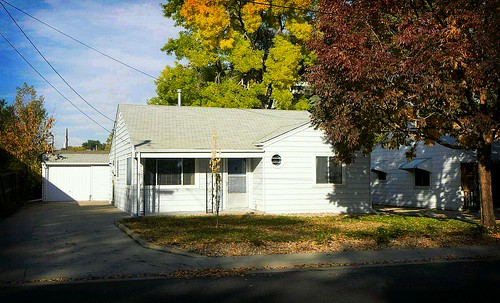making your home super energy-efficient doesn’t have to be super expensive
For me, one of the most exciting parts about buying a house is getting to make energy improvements to it. I'll be writing a series of posts documenting our process of making this 1950s house super energy-efficient, in the most cost-effective way possible (hopefully). It will be a phased retrofit, in that we'll do it in stages, as equipment fails or as we have time and money.
As an introduction, here is the house and some of its energy characteristics:

| Built: | 1950 |
| Floor area: | 989 ft2 (exterior dimensions) |
| Attic insulation: | ~R-16 (~7” blown fiberglass added in 1995) |
| Wall insulation: | none |
| Crawlspace insulation: | none |
| Air tightness: | 1649 cfm @ 50 Pa, 8.83 ACH50, 0.48 nACH
(including crawlspace volume) |
| Windows: | double-pane clear, vinyl frame, sliders |
| Heating: | 80% efficient natural gas boiler, baseboard radiators |
| Water Heating: | 0.59 EF atmospheric combustion natural gas water heater |
| Cooling: | Whole-house fan |
Some of the topics I'll be touching on in this series include:
- Overall Vision
- Financing/Rebates
- Energy Audit
- Utility bill analysis
- Air sealing
- Radon mitigation
- Wall insulation
- Ventilation/Bathroom Exhaust Fan
- Whole-House Fan
- Attic bypass sealing
- Attic insulation
- Crawlspace insulation plans
- Space and Water Heating System Plans
- Windows
Click to see all posts in this series:
a slow and steady deep energy retrofit

Wait, you guys live in Colorado, don't you? And no insulation in the walls?? YIKES.
ReplyDeleteDid you know that the $30/week guys are doing something a lot like this with their new house blog, minnisingh.com?
Yes, and sadly, most homes built before the 1970s have no wall insulation, regardless of climate.
ReplyDeleteThanks for mentioning minnisingh...another food sustainability blogger making expanding to include shelter, energy, etc.!